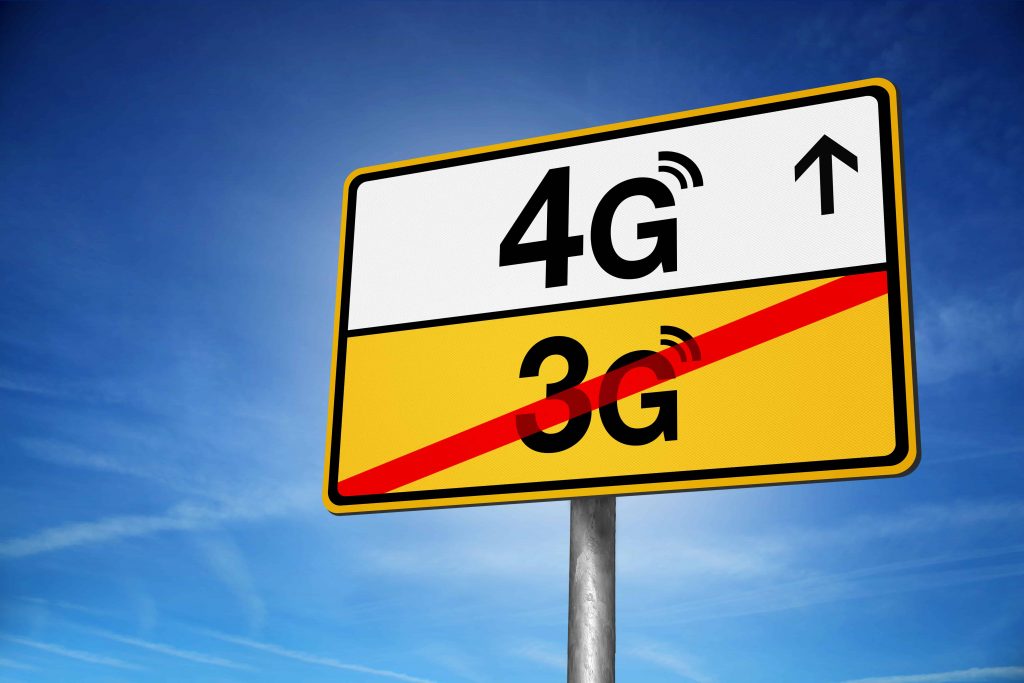Due to continued investment in 4G and 5G, Mobile Network Operators (O2, EE / BT, Vodafone and Three) are currently in the process of decommissioning 3G in the UK. 3G has already been phased out in many other European countries, with Germany most recently having completed this process in July 2021. In the UK, this transition is planned to be fully completed by 2023, with some services ending as soon as 2021.
3G is being phased out for the purpose of reusing spectrum and improving 4G LTE and 5G services. For the public, there will be very little noticeable change, but there are major implications for organisations and commercial enterprises. Put simply, if your premises uses a 3G femtocell or 3G Distributed Antenna System (DAS), users will no longer be able to receive or make calls or access mobile data. This will obviously have very serious operational and health and safety implications. The good news is there is still time to plan for the decommissioning of 3G – in this article we discuss who will be affected and what actions can be taken to ensure continuity of service.
Who and what will be affected by the 3G switch off?
3G Femtocells
What is a femtocell? Offered by the main network carriers (O2, Three, EE / BT and Vodafone), a femtocell, sometimes referred to as microcell, is a small box that uses an internet connection to boost cell phone coverage, by outputting a microcell site within the premises. These products typically will only cover a single room (up to 50 feet), are only capable of 3G, and all sims need to be pre-registered with each unit.
Many businesses (and consumers) have relied on femtocells for improving in-building mobile coverage. These include the EE Signal Box, O2 Boostbox, Three Home Signal and Vodafone Sure Signal, the latter of which is shutting down in 2021. Unfortunately, many of these devices cannot be upgraded to 4G (and none will accommodate 5G), the hardware simply is not capable. They also have capacity issues, with a limited number of users per box, and each SIM must be pre-registered in advance, meaning visitors cannot boost their signal. For businesses, this means that they will need to reinvest in a new solution such as a 4G repeater, distributed antenna system, or a 4G LTE / 5G mobile private network.
3G Distributed Antenna System (DAS)
A much more powerful solution than femtocell, a distributed antenna system is a network of antennas that provide a cellular signal by taking a signal source from outside and then distributing it around the building. A DAS is usually deployed in large buildings with poor mobile signal, for large numbers of users – this may include hospitals, warehouses, universities and hotels, where construction materials such as Low-E glass, steel and concrete block the signal from entering the buildings.
If your organisation had such a system installed prior to 2018 (and even afterwards), we recommend checking the hardware as it may need to be upgraded. Fortunately, in this case, depending on the type of DAS that was installed (passive, active or hybrid) it is probable that much of the infrastructure can be reused. This may mean simply upgrading the mobile network operator’s on-site Base Transceiver Station and replacing some of the distribution equipment (such as cabling) to accommodate the additional bandwidth required for 4G.
What can businesses do to plan for 3G switching off?
An audit of your existing hardware, devices and processes is a must. For example, are your mobile devices, such as phones and tablets, 4G-ready? Does your organisation use IoT-enabled devices such as card readers, alarms, sensors, lifts, security cameras, electric vehicle charging points, smart meters, or medical equipment? Some of these systems may be dependant on a 2G (discussed in more detail below), 3G or 4G connection.
Once you know if your organisation is going to be affected by the 3G switch off, it’s time to act. If you have building floor plans, the team at Boost Pro Systems offer a free desktop survey to help identify the best solution. Depending on requirements, this may be the installation of a rapidly-deployed 4G repeater system (which is 5G ready) – you can browse a range of mobile repeater products here, which cater for all building types and sizes, as well as vehicles.
What about 2G?
Many systems still rely on 2G, for example smart meters within homes and commercial buildings, as well as electric vehicle charging points. Fortunately, as 2G has comparatively low power requirements, it is expected that any switchover will not happen until at least the 2030s. Even then, due to its use in many critical systems, particularly in the public sector, a shared 2G network is a possible longer-term solution.
But what happens when 4G is eventually phased out?
The great news for IT decision-makers is that many services are already being rolled out as “5G-ready”, following cloud architecture frameworks prescribed by the mobile network operators. This means that most of the latest hardware is software-defined, with a 5G upgrade being a simple, remote software update – no more costly changes to IT architecture. Whilst the boosting of 5G signal is not permitted in the UK, this is currently being lobbied and we are hopeful that this will be authorised sooner rather than later.
What next?
With the 3G switch off right around the corner, it’s clear that planning for this needs to start happening now. The good news is that a 4G repeater deployment needn’t be costly or time-consuming, but you do need to consider UK laws, as using the wrong product can carry a very large fine – check out our information on the legalities of mobile repeaters for further information.
If there is anything we can do to support your business with this transition, don’t hesitate to talk to one of our experts.
References
https://www.waveform.com/pages/das-distributed-antenna-systems
https://www.vilicom.com/blog/posts/2021/july/the-big-3g-switch-off-the-impact-on-real-estate/
https://www.cullen-international.com/news/2021/07/New-benchmark-on-switching-off-2G-and-3G-networks-in-Europe.html
https://www.reuters.com/technology/britains-bt-phase-out-3g-next-two-years-it-ramps-5g-2021-07-14/
https://www.techradar.com/uk/news/ee-is-first-uk-operator-to-confirm-3g-switch-off-plans
https://www.verdict.co.uk/uk-analogue-phone-network-switch-off-openreach/
